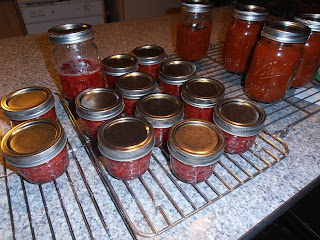Ah, the season is upon us, where we find ourselves getting
ill with all sorts of nasty little ailments. Now I want you to take a second
and describe for me some of your least favorite symptoms for me.
Let me guess in your long list that you used at least one,
if not two, three or four of these, hot, cold, wet and dry. No I am not a mind
reader, and yes I understand your pain but I know these words because their
magic was once seen as the answer to… well everything. Hot, Cold, Wet and Dry
were also known as the four humors. Not haha funny humors but the basics of the
entire body and universe. Almost every physical thing in this world can be
described using these four humors. In a perfect world all four would be
perfectly balanced but the world isn’t perfect so two of the four are always
more prevalent. In fact, according to this Greek idea that dates to before
370 B.C. and was stated by Hippocrates everything was broken into four parts.
For example: The Elements, there are four; air, earth, water
and fire. Even in those the four humors are prevalent. Fire is hot and dry,
earth is cold and dry, water is cold and wet and Air hot and wet. Of course the
system isn’t perfect because water earth can be hot and wet, and air can be
cold and dry. But like I said the world isn’t perfect. Yet this system every
house wife and doctor would know until the realization of germs in the 1860s. Then like the four
elements there was four humors in the body, Phlegmatic, Choleric, Melancholic,
and sanguine.
Someone who was Phlegmatical was cold and wet. These people
are more relaxed, caring and peaceful in nature. They are more content with
themselves, steadfast and consistent in their habits and seek the same in their
friends. They also tend to be more slow in their speech and clumsy in their
ways. Their body was controlled by phlegm; you know the stuff that comes out of
your nose, a product that was/is produced by the brain and lungs. In in
relationship to the elements they were equated to water.
 |
| Water of the Four Elements by Joachim Beuckelaer 1569 |
Next is Choleric, these people were hot and dry. They were
egocentric and extroverted. Easily excitable, impulsive and tried to instill
those ways into others. They are task oriented, with efficiency in mind. They
show leadership, were good at planning, practical and appreciate when other
people notice. However, their rash behavior often meant they were easily
angered. Think King Henry the IV. This idea was probably why he had 7 wives.
They often dealt with bought of gout. They were like fire, strong and powerful
and their bodies were controlled more by the yellow bile in their body. Bile
being what your spleen produces and we now know doesn't exist.
 |
| Fire of the Four Elements by Joachim Beuckelaer 1569 |
Someone who is Melancholic is like earth, cold and dry. They
are despondent, quiet and analytical. They are often too serious for their own
good. Their body had too much black bile which was thought to be produced by
the gallbladder and like Yellow Bile doesn't exist. Someone who is melancholic often suffers from depression.
 |
| Earth of the Four Elements by Joachim Beuckelaer 1569 |
Finally we come to air, I mean Sanguine. These people are
courageous, hopeful and carefree. They have too much blood in their body, which
is produced by the liver. They are warm and moist in nature. Like the wind they
go were ever their heart takes them.
![Joachim Beuckelaer - The Four Elements: Air [1569]:](https://s-media-cache-ak0.pinimg.com/564x/02/1c/fc/021cfc124b1ab3900e73fc404bcb2e24.jpg) |
| Air of the Four Elements by Joachim Beuckelaer 1569 |
Ok so yellow and black bile aren’t real but the idea kinda
works and it went deeper. Now your body changed as you did. I tend to be by
this system more Phlegmatic. I am controlled by my lungs, I have asthma,
because the fates thought it would be funny if the thing I should stuck the
most at would be breathing. Unfortunately for me one of the fun side-effects to
that is a wonderful chough and yawn, I tend to sneeze a lot. I am not slow in
my speech or thoughts in that way I am a little more choleric but I am content
being myself and being by myself. Now according to the humoral system since I
tend to be more cold and wet I should eat the opposite, Hot and dry to balance
out what my body was naturally. Pork, mustard, pepper, salt, carrots, parsnips,
asparagus and Lamb are hot and dry. Lettuce, spinach, and cabbage are cold and
dry. Beef, vinegar, onions, olive oil and pumpkins are hot and wet. Water,
fish, milk, cheese, and some berries are cold and wet. I should stick with hot
and dry but if I must eat cold and wet like fish, I should cook it with things
that are hot and dry, fish does taste pretty good with a mix of vinegar, oil,
pepper and mustard.
If you were sick you would look to the symptoms. If you had
a cold, you were chilled with phlegm. You should eat warm and dry things. Dry
to dry out the phlegm and warm to bring up the chill. If you had the flu you
were hot and dry so you should eat cold and wet things. Cold to bring down the
fever, and wet to get rid of the dryness.
So there you have it. The four humors, hot, cold, wet, and
dry. Alright flu, I have the solution to you… the flu shot and for the cold, be
prepared for lots of tea and tomato soup. It wasn’t a perfect system but it
worked for all of them.






































